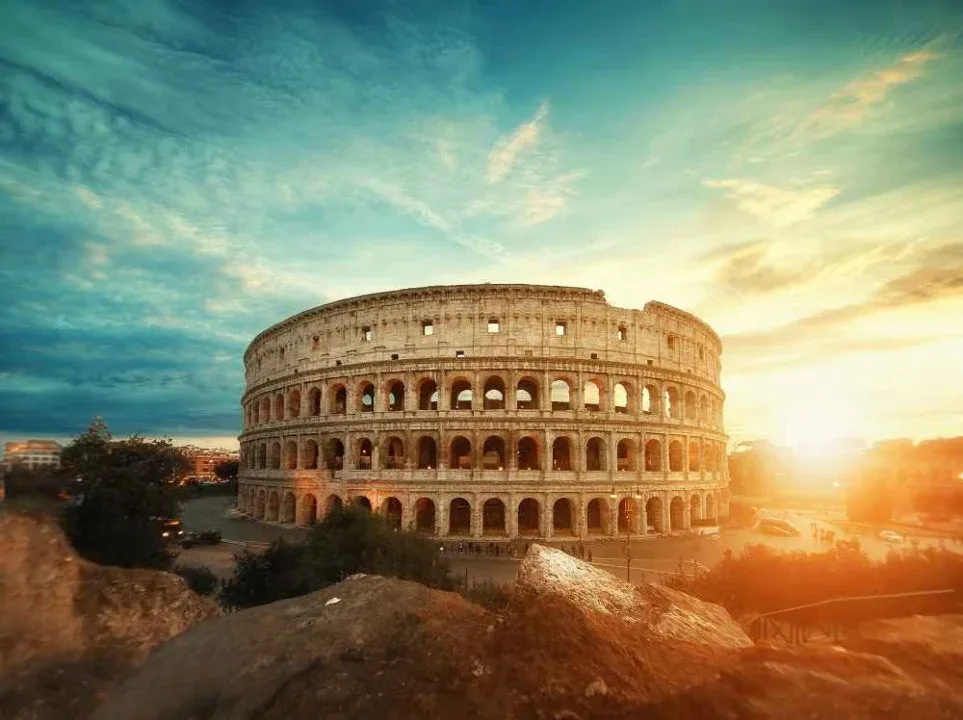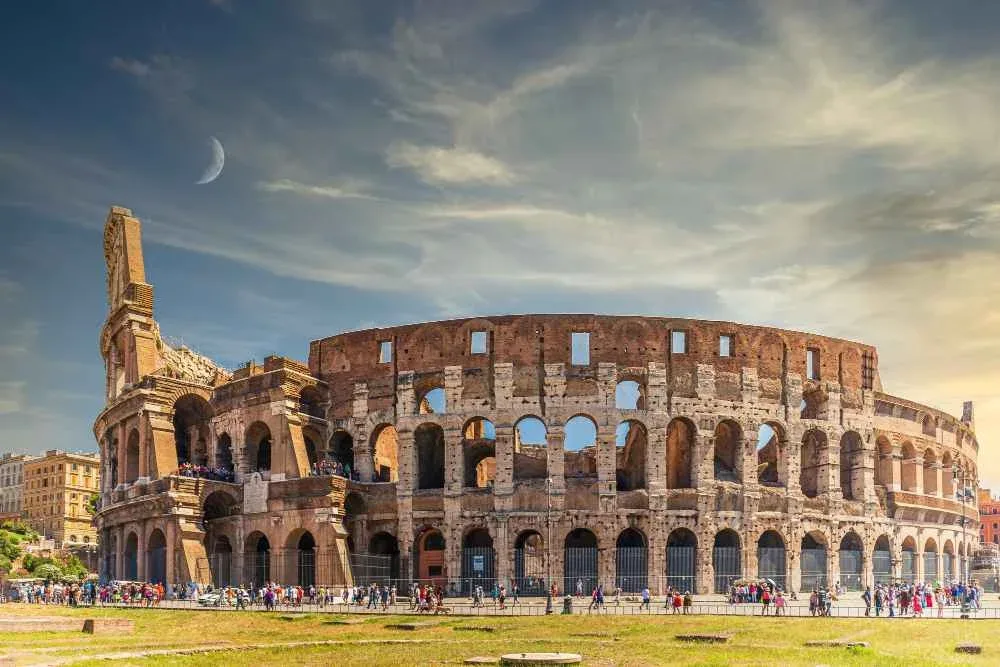Rome, the capital of Italy, is a city that is deeply rooted in history and culture. It is an enchanting place that attracts millions of visitors each year from all over the world. Whether you are a history buff or just looking for a new travel destination, Rome has something for everyone. With over 2,000 years of civilization, it’s no surprise that the city is home to some of the world’s most famous historical landmarks.
One of the best ways to explore the rich history of Rome is by visiting its many historical landmarks. Today, I will take you on a journey through time and highlight some of the must-visit historical landmarks in Rome. So grab your virtual passport and let’s explore the ancient city of Rome together.
The Colosseum
One of the most iconic landmarks in Rome, the Colosseum is a must-visit for anyone interested in Roman history. This ancient amphitheater was built around 70-80 AD and could hold up to 80,000 spectators. It was used for gladiatorial games, public spectacles, and other events. Today, the Colosseum stands as a symbol of Rome’s power and grandeur.
It located in the center of the city, and visitors can take a guided tour or explore on their own. You can also visit at night when it is beautifully lit up. But sometime at night, the area can get quite crowded with tourists and street vendors trying to sell souvenirs. I suggest visiting during the day for a more peaceful experience.
The Roman Forum
The Roman Forum was the center of political, religious, and social activity in ancient Rome. It was a bustling marketplace, as well as the site of important public events and ceremonies.
Today, visitors can walk through the ruins of this once vibrant area and imagine what life was like in ancient Rome. Here are some interesting facts and tips about visiting the Roman Forum:
- The Roman Forum was originally a marshy valley, but it was drained and eventually became the heart of the city.
- It was surrounded by important government buildings, such as the Senate House, where political decisions were made.
- The Temple of Caesar, built in honor of Julius Caesar after his death, can also be found in the Roman Forum.
- Many ruins and artifacts can still be seen in the Roman Forum today, giving visitors a glimpse into the past.

Read More: Scenic Train Journeys in Switzerland
The Pantheon
The Pantheon is a historic Roman temple right in the center of Rome. It was originally built as a temple to honor all the gods of Ancient Rome, but it has since been converted into a Christian church. The Pantheon is one of the best-preserved buildings from ancient Rome and is considered a masterpiece of Roman architecture.
The construction of the Pantheon began in 27 BC, during the reign of Augustus. However, it was rebuilt in its current form by Emperor Hadrian around 126 AD. The structure has a circular portico with large Corinthian columns that lead to the main entrance.
The dome of the Pantheon is its most notable feature, being one of the largest unsupported domes in the world at 142 feet in diameter. Visitors can see beautiful marble floors and walls adorned with colorful frescoes inside the Pantheon.
Castel Sant’Angelo
Another notable ancient structure in Rome is Castel Sant’Angelo, also known as the Mausoleum of Hadrian. Built in 139 AD, the structure was initially a mausoleum for Emperor Hadrian and his family. It later served as a fortress and castle before becoming a museum in the 20th century.
Visitor can tour the castle and see its stunning architecture, including the circular base and cylindrical structure. The interior features luxurious rooms and corridors adorned with intricate designs and sculptures.
Tips Before Visiting

- Plan your visit beforehand: It’s important to plan your visit to historical landmarks in Rome before arriving at the city. This will not only save you time but also help you make the most out of your visit. Research the opening hours, ticket prices and any special events or exhibitions happening at the landmark.
- Purchase tickets in advance: To avoid long queues and potential disappointment, it’s recommended to purchase your tickets in advance. This can usually be done online or at ticket booths located near the landmark.
- Wear comfortable shoes: Exploring historical landmarks in Rome often involves a lot of walking and stairs. Make sure to wear comfortable shoes to avoid any discomfort or potential injuries.
- Learn about the history: Before visiting a landmark, take some time to learn about its history and significance. This will enhance your experience and appreciation of the landmark.
- Respect the rules and regulations: Many landmarks have specific rules and regulations in place to protect their historical value. Be sure to follow these guidelines and respect the landmark’s cultural importance.
- Take plenty of photos: Capture your memories by taking plenty of photos at the landmark. Just be mindful of any restrictions on photography or video recording.
Read More: Best Time to Visit Cherry Blossoms in Kyoto
Final Words
Historical landmarks to visit in Rome are endless, and each one holds its unique significance. Whether you’re interested in ancient history, art, or architecture, there is always something to explore and discover in Rome. So, don’t miss out on these fascinating landmarks and make sure to add them to your travel itinerary.
FAQs
What is the best time to visit Rome?
The best time to visit Rome is during the spring (April-June) or fall (September-November) when the weather is pleasant and there are fewer crowds.
What should I wear when checking out religious sites in Rome?
Modest clothing is required when visiting religious sites in Rome. This means no bare shoulders or knees and avoid wearing revealing clothing.
Can I purchase tickets for these landmarks in advance?
It’s a good idea to grab your tickets in advance, especially during busy tourist seasons. This will help you skip the long lines and save time during your visit.
Are there any discounts available for students or seniors visiting these landmarks?
Yes, there are often discounted tickets available for students and seniors. It’s best to check the official websites of the landmarks or ask at the ticket office for any available discounts.
Are audio guides or guided tours offered at these landmarks?
Most of these landmarks offer audio guides or guided tours for an additional fee. These can be beneficial in providing more information and context about the landmark.
Can I take photos inside these landmarks?
Yes, photography is allowed inside most of these landmarks. However, there may be restrictions in certain areas or with the use of flash photography. It’s always best to ask the staff or check for any signs indicating prohibited photography.
